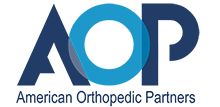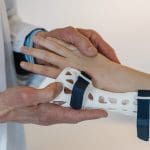
Ergonomic Essentials for Surgeons: Protecting Yourself While You Work
Orthopedic surgeons are no strangers to the physical demands of their profession. Every day, you spend long hours performing intricate procedures in the operating room or poring over patient files at a desk. Over time, these activities can strain your body, leading to fatigue, discomfort, and even long-term injuries. Maintaining your own well-being isn’t just critical for your personal health—it’s essential for sustaining the ability to offer exceptional care to your patients.
Implementing ergonomic principles into your routine can make a world of difference. Below, we’ll explore practical adjustments that can help you stay comfortable and minimize the risk of injury throughout your busy workday.
Invest in Proper Seating
For surgeons who spend time reviewing imaging or managing medical documentation, a well-designed chair is more than a luxury—it’s a necessity. When choosing an office chair, prioritize these key features:
- Adjustable Height: Your feet should rest flat on the floor, with your knees at a 90-degree angle.
- Lumbar Support: A contoured backrest helps maintain the natural curve of your spine, reducing lower back strain.
- Armrests: Properly positioned armrests can minimize shoulder and wrist fatigue during long periods of sitting.
Take the time to fine-tune your chair settings to your specific needs. Even minor adjustments to the height or tilt can significantly improve comfort.
Prioritize Supportive Footwear
Surgeons often have marathon shifts standing in the operating room, which can lead to foot, leg, and lower back pain. Supportive, well-cushioned footwear is essential. Look for options that provide:
- Arch Support: Helps distribute your weight evenly and prevents conditions like plantar fasciitis.
- Shock Absorption: Reduces stress on your joints during long hours of standing.
- Non-Slip Soles: Ensures safety in wet environments commonly found in OR settings.
Some surgeons find additional relief from orthotic inserts, which can be custom-fitted to their foot structure for enhanced support. Regularly replacing your shoes is equally important, as worn-out footwear loses its ability to protect and stabilize your feet.
Include Stretch Breaks into Your Routine
Static postures, whether standing or sitting, can lead to muscle stiffness and reduce circulation. One effective solution? Stretch breaks. These need not be elaborate or time-consuming; even a five-minute session every hour can work wonders.
Try these simple stretches:
- Hamstring Stretch: Place your foot on a chair or bench and gently lean forward, stretching the back of your thigh.
- Neck Rolls: Slowly tilt your head side to side and complete gentle circular motions to relieve neck tension.
- Wrist and Hand Stretches: Flex and extend your wrists to ease strain caused by long periods of holding surgical instruments.
Consider setting a timer as a reminder to step away, stretch, or even take a short walk. Regular movement helps maintain flexibility, reduces stiffness, and prevents long-term injuries.
Ergonomics in the OR
Operating rooms aren’t always designed with surgeon comfort in mind. However, paying attention to your posture and workstation setup can help you mitigate strain during procedures.
- Adjust Surgical Tables: Position the table height to ensure you can work with your arms comfortably at 90 degrees, avoiding unnecessary strain on your shoulders and back.
- Magnifiers or Loupes: These tools not only improve visibility but also encourage proper posture by helping you avoid excessive forward neck bending.
- Frequent Position Shifts: If possible, vary your stance slightly during repetitive tasks to activate different muscle groups and reduce static load.
Make Ergonomics a Habit
Good ergonomics involves more than one-time adjustments—it calls for regular practice and awareness. Incorporating small but powerful habits into your routine can drastically improve your physical well-being over time. For example, using wrist-friendly keyboards when typing and ensuring your computer monitor is at eye level can alleviate the strain caused by desk work.
Similarly, investing in ergonomic tools designed specifically for surgical practices, such as lightweight instruments or handheld devices with an optimal grip, can further enhance comfort during procedures.
Self-Care for Surgeons
Orthopedic surgeons often dedicate their lives to improving the mobility and quality of life for their patients. However, your commitment to care should also extend to yourself. Burnout and musculoskeletal injuries are real risks in the surgical profession, yet they are often overlooked in the pursuit of high productivity.
Placing your well-being at the forefront doesn’t just benefit you—it also enables you to deliver the highest level of care to your patients. Regular checkups, mindfulness exercises, and allocating time for physical activities outside of work are all essential components of a sustainable lifestyle.
Partnering with AOP for a Healthier Practice
At American Orthopedic Partners (AOP), we understand the unique challenges orthopedic surgeons face in balancing their demanding careers with personal health and well-being. Our physician-led team is dedicated to supporting orthopedic practices nationwide, providing the tools and resources surgeons need to thrive both professionally and personally. Whether it’s staying current with ergonomic advancements or fostering collaborative growth, AOP is committed to helping you build a resilient, fulfilling practice.
If you’re considering a partner to help your practice evolve without losing sight of your values, we to become part of the AOP community. Together, we can achieve transformational growth—for your practice and for you.













Sorry, the comment form is closed at this time.